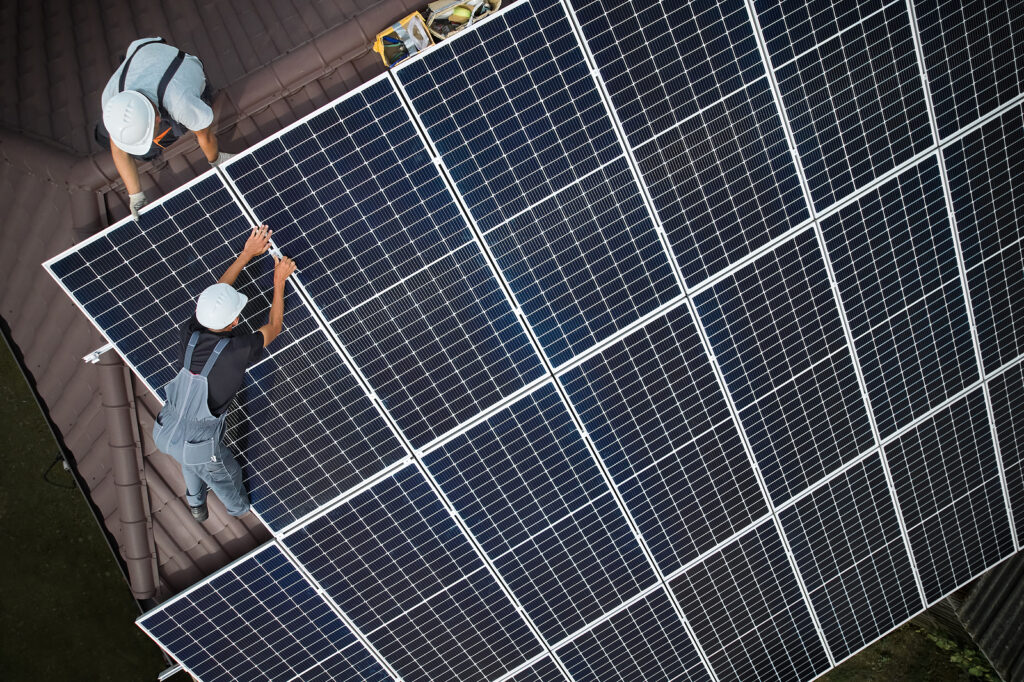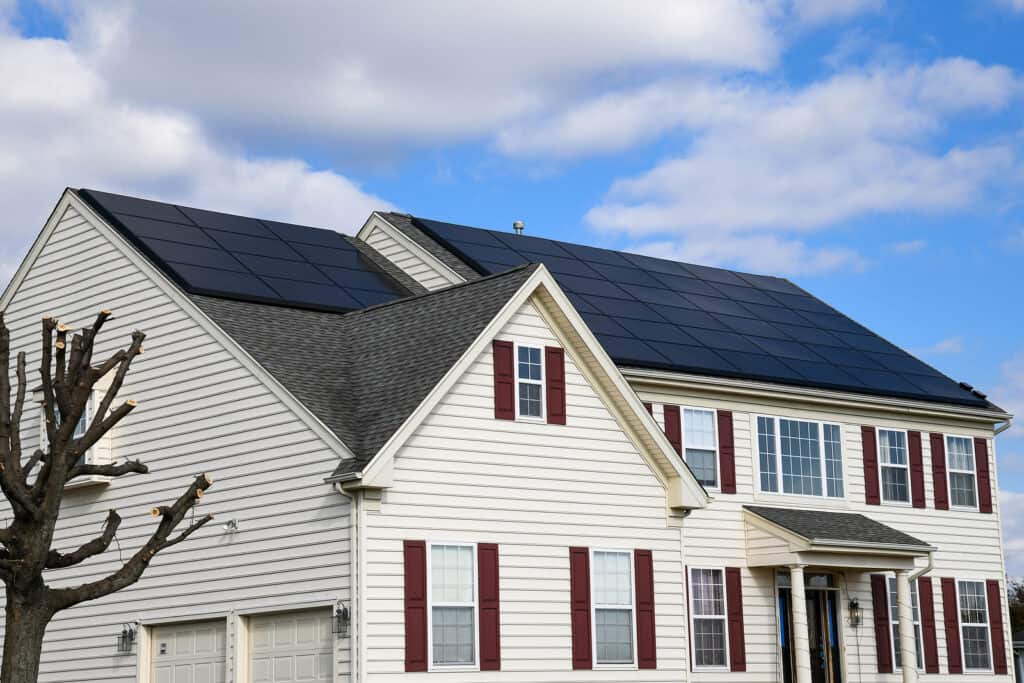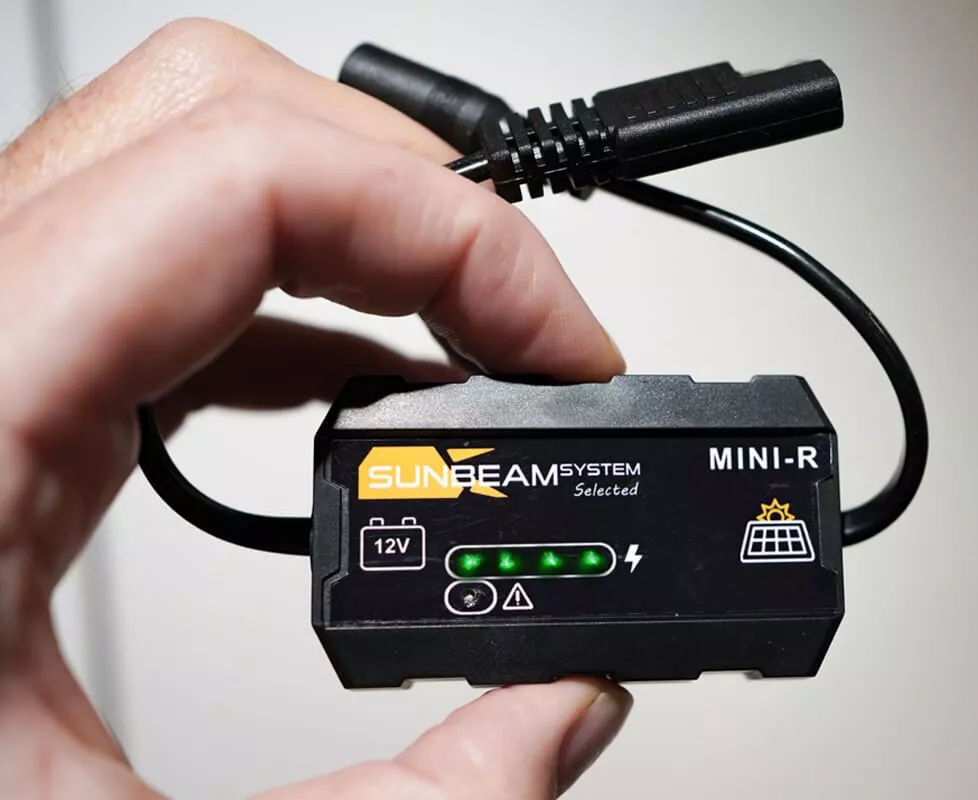How to Maximize Solar Efficiency with Epever MPPT Charge Controllers
As a homeowner living in an area with fluctuating weather patterns, I discovered the importance of solar energy for my home. However, I noticed that changing light conditions, especially during cloudy days or partial shading, affected the efficiency of my solar panels. That's when I learned about MPPT charge controllers and their incredible ability to adapt to varying light conditions.
I installed the Epever MPPT charge controller, and it has made a significant difference. It continuously tracks the maximum power point of each solar panel, ensuring consistent energy production even in challenging weather. Now, I have peace of mind, knowing that my solar panel system is performing at its best, regardless of the weather. It's like having an intelligent assistant for my solar energy setup, and I'm delighted to contribute to a greener environment while making the most out of my solar energy system.
Understanding Solar Energy and Charge Controllers
To understand the importance of a charge controller, one must first comprehend the basic mechanics of a solar power system. Solar panels convert sunlight into direct current (DC) electricity. This energy can either be used immediately or stored in batteries for later use.
A charge controller regulates the voltage and current coming from the solar panels and helps prevent battery overcharge, thereby protecting and extending the lifespan of your battery. The efficiency of the charge controller directly impacts the overall productivity of your solar power system.
What is an MPPT Charge Controller?
A charge controller is an important component of a solar panel system that regulates the voltage and current from the solar panels to the battery. It ensures that the battery is not overcharged or undercharged, which can cause damage to the battery and reduce its lifespan. There are two types of charge controllers: PWM (Pulse Width Modulation) and MPPT (Maximum Power Point Tracking).
An MPPT charge controller is more efficient than a PWM charge controller because it can track the maximum power point of the solar panels and adjust the voltage and current to match the battery's requirements. This means that solar panels can produce more energy, which can be stored in the battery and used later. The Epever best mppt solar charge controllers is a popular choice for solar panel systems because of its high efficiency and reliability.

How Does the Epever MPPT Charge Controller Work?
The Epever MPPT charge controller is a highly sophisticated device that utilizes cutting-edge algorithms to optimize the performance of solar panels. Its primary function is to track and maintain the maximum power point (MPPT) of the connected solar panels. To achieve this, the charge controller continuously analyzes the voltage and current generated by the solar panels in real-time.
With this information, the Epever MPPT charge controller dynamically adjusts the output voltage and current to precisely match the requirements of the connected battery bank. By doing so, it ensures that the solar panels are consistently operating at their peak efficiency, extracting the maximum possible energy from the sunlight they receive. This efficiency improvement can result in significantly higher energy yields compared to traditional charge controllers.
A key feature of the Epever MPPT charge controller is its built-in LCD screen, which serves as an intuitive interface for users. The LCD display provides crucial data about the solar panel system's performance, including real-time readings of the voltage, current, and power output. This information allows users to monitor the system's health and overall efficiency, facilitating better decision-making and maintenance.
Why Choose Epever MPPT Charge Controllers?
Epever MPPT charge controllers have earned a well-deserved reputation for being a top choice in the solar power industry, owing to their commitment to innovation, quality, and sustainability. When it comes to enhancing the efficiency and performance of your solar power system, Epever is a brand that stands out from the rest.
Innovation lies at the core of Epever's approach, as they continually strive to integrate cutting-edge technologies and advanced algorithms into their charge controllers. These controllers are designed to dynamically track and optimize the maximum power point (MPPT) of your solar panels, ensuring that they consistently operate at peak efficiency. By harnessing the full potential of solar energy, Epever MPPT charge controllers lead to significantly higher energy yields compared to conventional charge controllers.
The quality of Epever MPPT charge controllers is of paramount importance to the brand. Rigorous testing, quality control, and adherence to international standards are all part of their manufacturing process. As a result, customers can trust that these charge controllers are built to last, with robust construction and dependable performance. The focus on quality not only ensures long-term reliability but also contributes to the safety and stability of your solar power system.
Epever recognizes the diverse requirements of solar power installations, and that's why their MPPT charge controllers are engineered to be compatible with various battery types. Whether you are using lead-acid, lithium-ion, gel, or other types of batteries, you can rely on Epever charge controllers to effectively manage and optimize the charging process. This versatility makes Epever MPPT charge controllers suitable for a wide range of solar applications, from residential setups to large-scale commercial projects.

Advantages of Using the Epever MPPT Charge Controller:
The Epever MPPT charge controller offers a host of compelling advantages, making it an excellent choice for your solar panel system. Let's delve into the details of these advantages:
Higher Efficiency
One of the key advantages of the Epever MPPT charge controller lies in its superior efficiency when compared to traditional PWM charge controllers. The MPPT technology enables the controller to constantly track the maximum power point of the solar panels. By adjusting the voltage and current output accordingly, the charge controller ensures that the solar panels operate at their optimal efficiency, extracting the maximum amount of energy from the available sunlight. This increased efficiency translates into higher energy yields, allowing more power to be stored in the battery for later use.
Longer Battery Lifespan
Epever's MPPT charge controller incorporates a built-in temperature sensor that plays a crucial role in maximizing the lifespan of your battery. By monitoring the temperature of the battery in real-time, the charge controller intelligently adjusts the charging voltage. This temperature compensation feature prevents overcharging during hot weather and ensures sufficient charging during colder conditions. As a result, the battery is safeguarded from potential damage caused by excessive heat or inadequate charging, significantly prolonging its overall lifespan and reducing maintenance costs.
User-Friendly Interface
Epever has designed its MPPT charge controller with user convenience in mind. The inclusion of a built-in LCD screen provides an intuitive interface for users to access critical information about their solar panel system. Through the LCD display, users can easily monitor key metrics such as voltage, current, and power output in real-time. This wealth of information empowers users to make informed decisions, identify potential issues, and optimize system performance effortlessly.
Remote Monitoring Capabilities
The Epever MPPT charge controller goes a step further in enhancing user control and convenience by featuring an RS485 communication port. By connecting the charge controller to a computer or mobile device, users gain the ability to remotely monitor their solar panel system. This remote access allows for real-time monitoring and data analysis from a distance. Whether you are on-site or away, you can access the charge controller's data and make necessary adjustments or interventions as needed. This level of remote monitoring greatly simplifies maintenance and troubleshooting, ensuring the system operates optimally at all times.
Key Features of Epever MPPT Charge Controllers
Epever MPPT charge controllers are designed with an array of key features that play a vital role in maximizing the efficiency and performance of your solar power system. Let's delve into the details of these features to fully understand their potential:
Advanced MPPT Technology
At the heart of Epever MPPT charge controllers lies the utilization of advanced Maximum Power Point Tracking (MPPT) technology. This cutting-edge technology enables the charge controllers to precisely track and extract the maximum available power from the solar panels. By dynamically adjusting the voltage and current output to match the battery's requirements, the MPPT charge controllers achieve up to 30% higher efficiency compared to conventional Pulse Width Modulation (PWM) charge controllers. This significant boost in efficiency ensures that your solar panels operate at their peak performance, translating into increased energy production and reduced overall costs.
Versatile Battery Compatibility
Epever's MPPT charge controllers are engineered to be compatible with a wide range of battery types. Whether you are using Absorbent Glass Mat (AGM), Gel, Flooded lead-acid batteries, or more modern Lithium batteries, an Epever controller can be seamlessly integrated into your system. This versatility allows you to optimize the charging process and tailor it to suit your specific battery type. The charge controller's ability to work with diverse battery technologies ensures that your solar power system operates optimally, regardless of your chosen battery chemistry.
High Tracking Efficiency
Epever MPPT charge controllers boast a remarkably high tracking efficiency, surpassing 99.5%. This exceptional tracking efficiency means that the controller continuously and accurately identifies the maximum power point of your solar panels. As a result, minimal power loss occurs during the energy conversion process. By mitigating energy wastage, the high tracking efficiency contributes to an overall improvement in the performance of your solar power system. The increased efficiency results in a more productive and cost-effective system, allowing you to make the most of your solar energy investment.
High Conversion Efficiency
Epever MPPT charge controllers boast high conversion efficiency, which refers to the effectiveness of converting solar energy into usable electricity. Thanks to their advanced MPPT technology and precision electronics, these controllers can achieve conversion efficiencies of over 98%. This high efficiency ensures that a larger portion of the captured solar energy is efficiently converted into electricity, maximizing the system's overall performance and reducing energy wastage.
Multiple Load Control Modes
Epever MPPT charge controllers offer a variety of load control modes, allowing you to customize the operation of your solar power system according to your specific needs. Common load control modes include timer control, light control, and dual-time control. By using these modes, you can optimize energy usage and adapt the system's behavior to suit different operational scenarios, making it ideal for off-grid and hybrid solar setups.
Comprehensive Protection Mechanisms
Epever MPPT charge controllers are equipped with multiple protection features to safeguard your solar power system and connected components. These controllers typically include protections against overcharging, over-discharging, short-circuiting, reverse polarity, and over-temperature. Additionally, some models also offer electronic fuse protection to prevent damage due to excessive current. These comprehensive protection mechanisms enhance the safety and longevity of your solar power system, ensuring reliable and trouble-free operation.
Tips to Maximize Solar Efficiency with Epever MPPT Charge Controllers
To fully optimize the performance of your solar system utilizing the Epever MPPT charge controller, it's essential to delve into practical steps that can significantly enhance solar efficiency.
Optimal Panel Placement for Maximum Sun Exposure
The success of your solar installation largely depends on strategically positioning your solar panels. Achieving optimal sun exposure involves orienting the panels to face the sun's path, which typically means south-facing in the Northern Hemisphere and north-facing in the Southern Hemisphere. Furthermore, ensure that there are no potential obstructions, such as tall trees or buildings, that could cast shadows on your panels during the day, as shadows can significantly reduce their energy production.
Correct System Configuration to Avoid Performance Issues
To ensure peak performance and prevent any potential damage to your solar equipment, it is crucial to set up your Epever MPPT charge controller with the correct system configuration. This includes selecting the appropriate battery type (Lead-acid, Gel, AGM, LiFePO4, etc.) and configuring it to the suitable voltage level to match your solar panel array.
Regular Maintenance and Thorough Inspections
The long-term efficiency and durability of your solar system can be maximized through regular maintenance practices. Performing routine cleaning of your solar panels to eliminate accumulated dust, leaves, and other debris will ensure that they maintain their optimum efficiency. Additionally, it is essential to conduct periodic inspections of your charge controller and batteries, looking for any signs of wear, corrosion, or damage. Addressing potential issues early on can prevent larger problems in the future and maintain the system's overall effectiveness.
Stay Updated with Firmware Upgrades
Staying up-to-date with the latest advancements and improvements from Epever is vital for optimizing your charge controller's performance. The manufacturer frequently releases firmware updates that may introduce new features or enhance the device's capabilities. By regularly updating your charge controller's firmware, you can take advantage of these improvements, ensuring that your solar system remains at the cutting edge of efficiency.
- Leverage the Load Output Terminal for Energy Savings:
The Epever MPPT charge controllers are equipped with a load output terminal, which offers the advantage of directly powering DC loads. This feature can significantly save energy compared to using an inverter to convert power to AC before supplying the load. By utilizing the load output terminal efficiently, you can optimize energy consumption and further enhance the overall efficiency of your solar setup.
Conclusion
In this personal account, the author, a homeowner residing in an area with fluctuating weather patterns, shares their journey towards maximizing solar efficiency with the Epever MPPT charge controller. They emphasize the importance of understanding solar energy and charge controllers in optimizing a solar power system.
The article highlights the benefits of MPPT technology and how the Epever controller dynamically tracks the maximum power point of solar panels, ensuring consistent energy production even during challenging weather conditions. The author praises the charge controller's user-friendly interface, remote monitoring capabilities, and comprehensive protection features.
They also offer practical tips for maximizing solar efficiency, such as optimal panel placement, regular maintenance, and staying updated with firmware upgrades. The Epever MPPT charge controller is presented as a transformative addition to the author's solar setup, providing reliability, sustainability, and increased energy yields.

